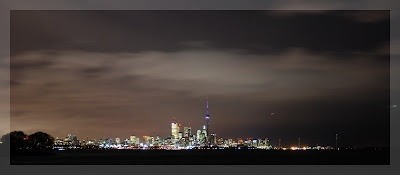 I waited for nearly four weeks for this Nikkor 50mm f/1.8D to arrive. I purchased it over eBay for $91USD. With shipping, it came out to $116USD. Custom duties costed me $18CAD -- what a rip-off.
I waited for nearly four weeks for this Nikkor 50mm f/1.8D to arrive. I purchased it over eBay for $91USD. With shipping, it came out to $116USD. Custom duties costed me $18CAD -- what a rip-off.Anyhow, here is a first attempt at macro photography. I had a hard time taking these two photographs because I kept on hitting parts of the plant and that caused the flower to move incessantly. When you work at this macro level at f/1.8, a millimeter or two can make a huge difference so I closed the aperture down by a few f-stops, to f/4 or f/8 I believe. I forgot to jot down the settings and because I used simple extension tubes, there is no electronic contact between the lens and the camera body. Yes, I used an extension tube because the 50mm is so so for macro. I did however remember having used my speedlight set on manual mode with its power output reduced to 1/64. The speedlight was mounted on the hot shoe with the diffuser dome on to soften and spread more light everywhere.
 With the aperture set at f/4 or f/8 and using a speedlight on low power, I was able to light up my subject and leave the noise in the background in the dark.
With the aperture set at f/4 or f/8 and using a speedlight on low power, I was able to light up my subject and leave the noise in the background in the dark.My extension tube is made up of three sections (9mm, 16mm, 30mm). This first shot was taken with a 55mm extension. The second shot was taken with a 25mm extension. These two photos are not spectacular shots, artistically speaking, but notice how much detail you can see of the stigma and anthers at this level. Sweet, I think.
ADDENDUM
Here I am adding an addendum to the original post. At home, I cut up a kiwi and before eating it I thought I'd frame it up macro-style. The depth-of-field is really really small, maybe 8mm deep?? This shot of the kiwi was set at f/22, the smallest aperture on the 50mm.
 Under my kitchen fluorescent lights, I could not see anything through the viewfinder. Total blackness so again taking this shot was just as difficult as taking the two shots above without a tripod.
Under my kitchen fluorescent lights, I could not see anything through the viewfinder. Total blackness so again taking this shot was just as difficult as taking the two shots above without a tripod.To compensate for the pinhole aperture, the speedlight output power had to be increased from 1/64 to 1/4.
The kiwi is in my tummy now.













